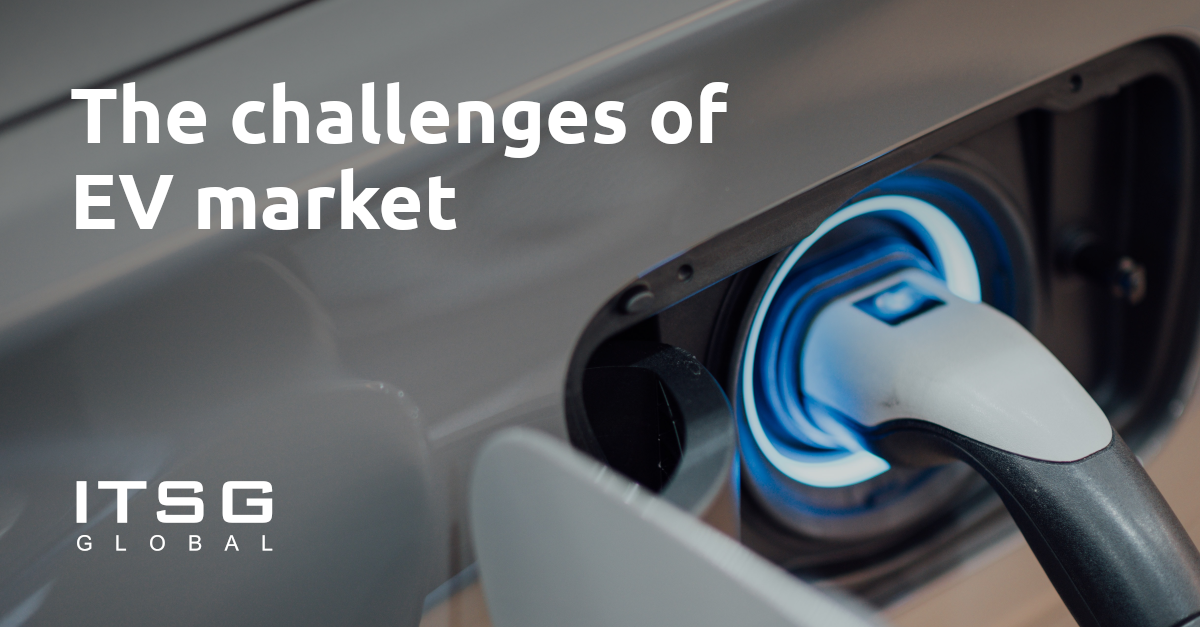8 February 2022
EV stands for electric vehicle and it’s a dynamic sector with multiple projects taking off as we speak. EVs are expected to change the landscape of the automotive market, since car manufacturers and fleet operators are checking the possibilities and benefits of anticipated changes. Switching from petrol to EV is supposed to help secure the net carbon emissions and achieve the “zero carbon emission” target – hence the growing popularity of EV technology.
The EV market is more than just vehicles itself. One thing that has to be kept in mind is the whole infrastructure and software behind the actual vehicles. But let’s begin with the basics.
WHAT WE SEE
Electric cars work, because they use rechargeable batteries instead of tanks. The batteries power an electric motor which is responsible for moving the wheels. The car can be charged in a public charging station or in the home charger if a person owns one and has a EV tariff, quite necessary if you want to save money on the bill. When it comes to other functions, electric cars are just as advanced as traditional types of cars.
EV are slowly being incorporated into the general landscape and one interesting example of such is their presence in Coca Cola commercials in 2021. The classic “Christmas truck” went fully electric. Santa decided to become more sustainable and traveled 1300km spreading Christmas joy using renewable sources of energy.
Another example of good practices is a zero-emission deal to update 10 000 school buses in North America with battery-electric powertrains. The point is to eliminate diesel engines in this part of the sector and provide eco-friendly transportation that is more affordable than buying new electric buses. It’s estimated that one new vehicle costs the same as two to three re-powered buses.
Development of ULEZ (Ultra Low Emission Zones) will bring more challenges to the table, since all vehicles entering ULEZ must meet rigorous standards or the driver will have to pay a fee. In December 2021 first trial of EV inductive charge was run, to test a contactless technology eliminating cables or any interaction between the driver and the charge point. The goal is to declutter city areas and allow a simple, intuitive charging on parking spots and there will be more tests performed in different locations.
HOW EV WILL TRANSFORM THE JOB MARKET
Growing interest in EV will create more green jobs. For instance- there will be a demand for batteries and that demand is expected to triple between 2020 and 2025.
Traditional production techniques are neither fast nor flexible enough to achieve the goals, so that’s where smart manufacturing comes into action. First, new concepts of batteries have to be developed by chemists and engineers. Later they have to be tested and to speed up that part of the process and optimize the data collection, it’s good to have a digital twin. The digital twin will be a subject to some tests, but it will also gain data from the physical world and the combination of both will be used to support decision making.
The concept of a digital twin has been present for a while now, however the existence of IoT made it more accessible and cost effective. A digital twin is a virtual model which can simulate the whole lifecycle of a product. If it’s being used for EV batteries it can provide information on how the battery will be working for years to come and how it is going to influence the user. Using a digital twin means access to data, which are not available in the physical world, but necessary to improve the customer experience.
Since EV is a fast growing market which has its role to play in decarbonization of mobility, it’s crucial to provide high volumes of safe and cost-effective EV batteries.
Operators of charging points will have to face similar challenges to enable even distribution to all EVs using charging points simultaneously. The increase in numbers of vehicles will bring the need of dynamic load management, basically a solution in which the autonomous system would control the charging power based on the maximum possible load set for a group. Putting a physical charging spot is one thing, the other is to implement a system that will effectively manage the power.
Another interesting idea is the concept of battery swapping – a recharging method in which an empty battery is removed from the car and exchanged for a fully charged one. That alternative is being tested in a “manual version” (batteries changed by hand) and an autonomous version in which robots perform the job. Both of those require the existence of accessible stations and software for easier management, and it leads to the next issue – the question of drawing electricity; the charging point might be connected to a pre-existing power connection, a new connection or can use a renewable energy system, which should be enabled by photovoltaic or solar-wind hybrid systems.
In conclusion, the EV market will change the whole landscape of future transport. It will be a source of inspiration and challenges, but in the end – it has to be done for climate and, ultimately, for us.
Author: Leszek Warzecha, Digital Marketing Specialist at ITSG Global







